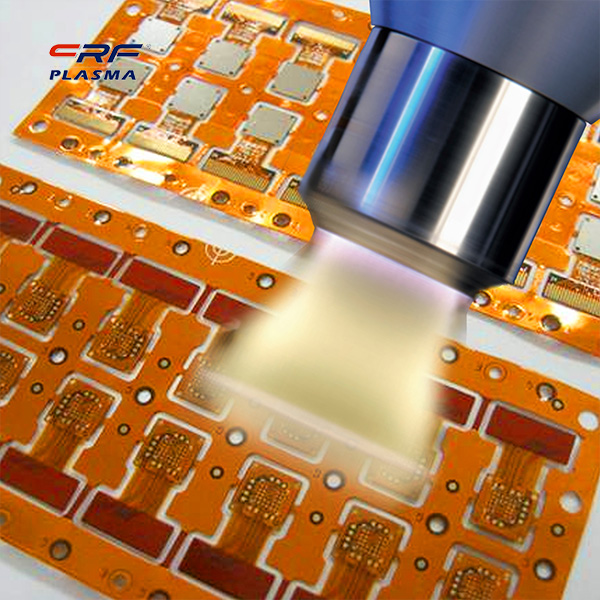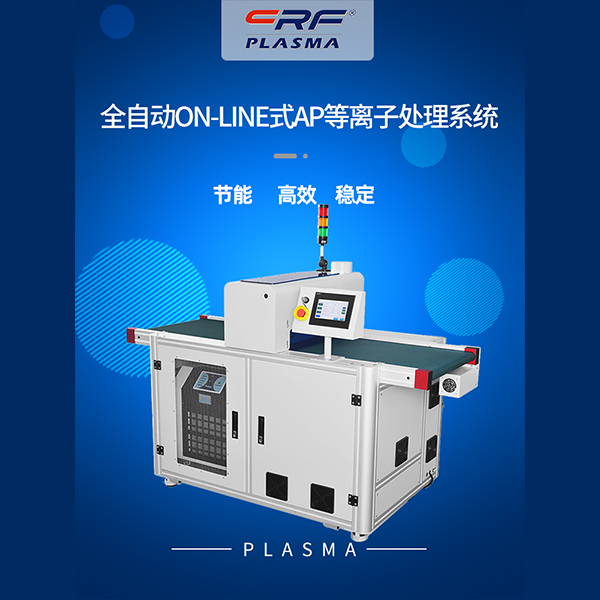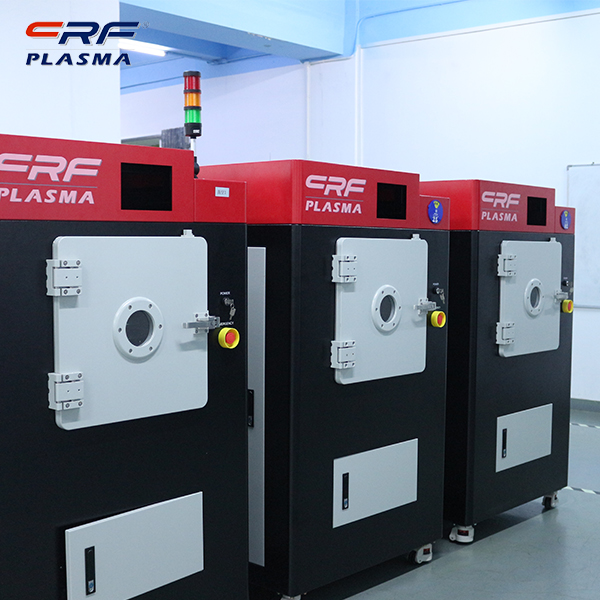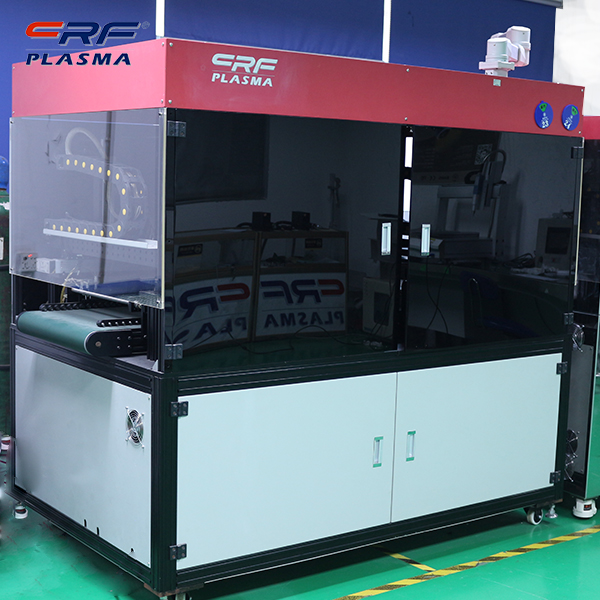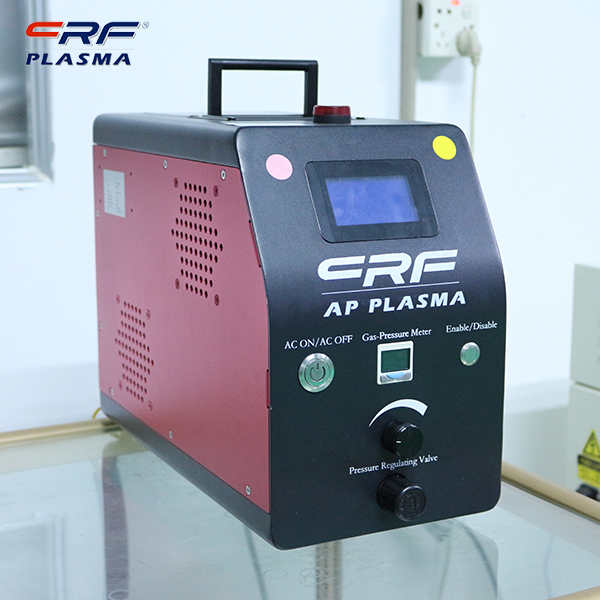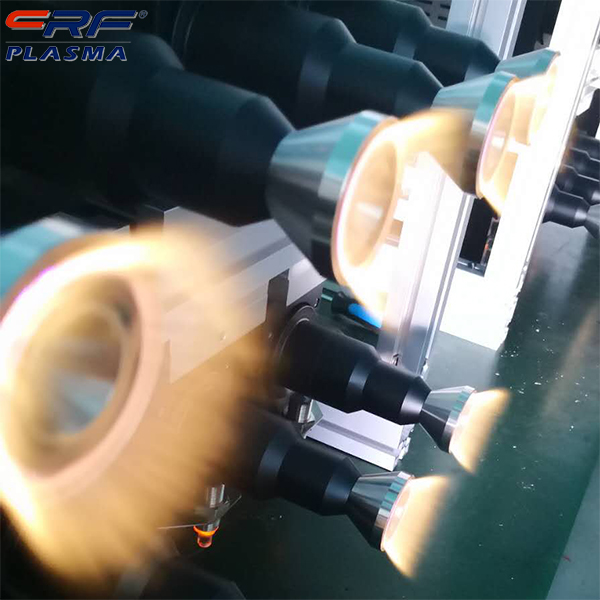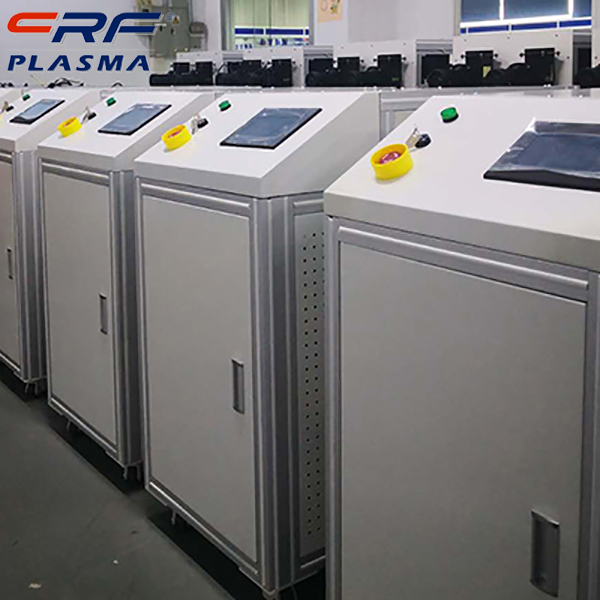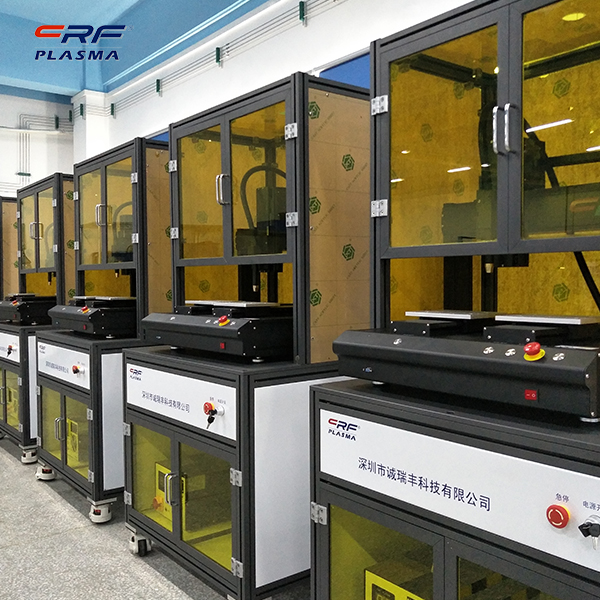
Welcome to Shenzhen Sing Fung Intelligent Manufacturing Co., Ltd.
E-mail:shaobo@sfi-crf.com
5 major surface treatment technologies, take stock of those surface treatment processes that you don’t know
- Categories:Company Dynamics
- Author:Plasma cleaning machine-CRF plasma plasma equipment-plasma surface treatment machine manufacturer-chengfeng intelligent manufacturing
- Origin:
- Time of issue:2021-12-24
- Views:
(Summary description)5 major surface treatment technologies, take stock of those surface treatment processes that you don’t know: Surface treatment refers to the artificial formation of a surface layer on the surface of the substrate that has different mechanical, physical and chemical properties from the substrate. The purpose of surface treatment technology is to meet the special performance requirements of products such as corrosion resistance, abrasion resistance, and decoration. So what are the material surface treatment processes? 1. Surface treatment technology before painting: In order to remove all kinds of foreign matter attached to the surface of the object (such as oil, rust, dust, old paint film, etc.), a good substrate is provided to meet the coating requirements and ensure that the coating has good anti-corrosion performance, decoration and certain For some special functions, the surface of the object must be pretreated before coating. The work of this kind of treatment is generally referred to as pre-painting (surface) treatment or pretreatment (surface). 2. Manual operation technology: For example, scrapers, wire brushes, grinding wheels, etc. Manual treatment can remove the rust and oxide layer on the surface of the workpiece, but the manual treatment has high labor intensity, low production efficiency, poor quality, and incomplete cleaning. 3. Chemical processing technology: Use acidic or alkaline solutions to chemically react with the oxide and oil on the surface of the workpiece to dissolve them in the acid or alkaline solution to achieve the purpose of removing rust, oxide scale and oil on the surface of the workpiece, and then use nylon wool Cleaning with brush roller or 304# stainless steel wire (steel brush roller made of acid and alkali solution) can achieve the purpose. The chemical method is suitable for cleaning thin plates, but its disadvantage is: if the time is not properly controlled, even if the preservative is added, the steel will be over-corroded. For more complex structural parts and parts with holes, use acidic solution to acid After washing, the remaining acid immersed in the crevices or cavities is difficult to completely remove. If it is not handled properly, it will become a hidden danger of future corrosion of the workpiece, and the chemicals are volatile and costly. It is difficult to discharge the chemicals after treatment. If they are not handled properly, It will cause serious pollution to the environment. 4. Mechanical processing technology, mainly including the wire grinder, the grinder and the shot blasting machine of the grinder: The sanding method is also called the polishing method, that is, the brush roller is driven by a motor and rotates at a high speed along the movement direction of the upper and lower surfaces of the strip to remove the oxide scale. Shot blasting is a method of using centrifugal force to accelerate the projectile and throw it to the workpiece to remove rust. However, shot blasting has poor flexibility and is limited by the site. There is a certain degree of blindness during cleaning. Dead corners are easily generated on the inner surface of the workpiece and the cleaning is not in place. When choosing conveying equipment and dust removal equipment, manufacturers who need spray treatment must fully consider the actual production situation and try to choose equipment with higher power, because the equipment for spraying operations generally wears quickly, and after long-term use, this or that The problem will have a great impact on production. Choosing equipment with higher power will greatly reduce the time and cost of later maintenance. 5. Plasma surface treatment technology: The plasma surface treatment machine is composed of plasma generator, gas pipeline, plasma nozzle and other components. The plasma nozzle generates high-voltage and high-frequency energy, generates low-temperature plasma through plasma jet and controlled discharge, and uses compressed air to spray plasma onto the surface of the workpiece. When the surface of the processing object is in contact, the object changes and chemical reactions occur. Its surface is cleaned to remove hydrocarbon dirt, such as grease, auxiliary additives, etc., or produce roughness due to etching, or form a dense cross-linked layer, or introduce oxygen-containing polar groups (hydroxyl, carboxyl, etc.) ), these groups can improve the adhesion properties of various coating materials and optimize the adhesion of coatings and the use of coatings.
5 major surface treatment technologies, take stock of those surface treatment processes that you don’t know
(Summary description)5 major surface treatment technologies, take stock of those surface treatment processes that you don’t know:
Surface treatment refers to the artificial formation of a surface layer on the surface of the substrate that has different mechanical, physical and chemical properties from the substrate. The purpose of surface treatment technology is to meet the special performance requirements of products such as corrosion resistance, abrasion resistance, and decoration. So what are the material surface treatment processes?
1. Surface treatment technology before painting:
In order to remove all kinds of foreign matter attached to the surface of the object (such as oil, rust, dust, old paint film, etc.), a good substrate is provided to meet the coating requirements and ensure that the coating has good anti-corrosion performance, decoration and certain For some special functions, the surface of the object must be pretreated before coating. The work of this kind of treatment is generally referred to as pre-painting (surface) treatment or pretreatment (surface).
2. Manual operation technology:
For example, scrapers, wire brushes, grinding wheels, etc. Manual treatment can remove the rust and oxide layer on the surface of the workpiece, but the manual treatment has high labor intensity, low production efficiency, poor quality, and incomplete cleaning.
3. Chemical processing technology:
Use acidic or alkaline solutions to chemically react with the oxide and oil on the surface of the workpiece to dissolve them in the acid or alkaline solution to achieve the purpose of removing rust, oxide scale and oil on the surface of the workpiece, and then use nylon wool Cleaning with brush roller or 304# stainless steel wire (steel brush roller made of acid and alkali solution) can achieve the purpose. The chemical method is suitable for cleaning thin plates, but its disadvantage is: if the time is not properly controlled, even if the preservative is added, the steel will be over-corroded. For more complex structural parts and parts with holes, use acidic solution to acid After washing, the remaining acid immersed in the crevices or cavities is difficult to completely remove. If it is not handled properly, it will become a hidden danger of future corrosion of the workpiece, and the chemicals are volatile and costly. It is difficult to discharge the chemicals after treatment. If they are not handled properly, It will cause serious pollution to the environment.
4. Mechanical processing technology, mainly including the wire grinder, the grinder and the shot blasting machine of the grinder:
The sanding method is also called the polishing method, that is, the brush roller is driven by a motor and rotates at a high speed along the movement direction of the upper and lower surfaces of the strip to remove the oxide scale. Shot blasting is a method of using centrifugal force to accelerate the projectile and throw it to the workpiece to remove rust. However, shot blasting has poor flexibility and is limited by the site. There is a certain degree of blindness during cleaning. Dead corners are easily generated on the inner surface of the workpiece and the cleaning is not in place.
When choosing conveying equipment and dust removal equipment, manufacturers who need spray treatment must fully consider the actual production situation and try to choose equipment with higher power, because the equipment for spraying operations generally wears quickly, and after long-term use, this or that The problem will have a great impact on production. Choosing equipment with higher power will greatly reduce the time and cost of later maintenance.
5. Plasma surface treatment technology:
The plasma surface treatment machine is composed of plasma generator, gas pipeline, plasma nozzle and other components. The plasma nozzle generates high-voltage and high-frequency energy, generates low-temperature plasma through plasma jet and controlled discharge, and uses compressed air to spray plasma onto the surface of the workpiece. When the surface of the processing object is in contact, the object changes and chemical reactions occur. Its surface is cleaned to remove hydrocarbon dirt, such as grease, auxiliary additives, etc., or produce roughness due to etching, or form a dense cross-linked layer, or introduce oxygen-containing polar groups (hydroxyl, carboxyl, etc.) ), these groups can improve the adhesion properties of various coating materials and optimize the adhesion of coatings and the use of coatings.
- Categories:Company Dynamics
- Author:Plasma cleaning machine-CRF plasma plasma equipment-plasma surface treatment machine manufacturer-chengfeng intelligent manufacturing
- Origin:
- Time of issue:2021-12-24 17:01
- Views:
5 major surface treatment technologies, take stock of those surface treatment processes that you don’t know:
Surface treatment refers to the artificial formation of a surface layer on the surface of the substrate that has different mechanical, physical and chemical properties from the substrate. The purpose of surface treatment technology is to meet the special performance requirements of products such as corrosion resistance, abrasion resistance, and decoration. So what are the material surface treatment processes?
 1. Surface treatment technology before painting:
1. Surface treatment technology before painting:
In order to remove all kinds of foreign matter attached to the surface of the object (such as oil, rust, dust, old paint film, etc.), a good substrate is provided to meet the coating requirements and ensure that the coating has good anti-corrosion performance, decoration and certain For some special functions, the surface of the object must be pretreated before coating. The work of this kind of treatment is generally referred to as pre-painting (surface) treatment or pretreatment (surface).
2. Manual operation technology:
For example, scrapers, wire brushes, grinding wheels, etc. Manual treatment can remove the rust and oxide layer on the surface of the workpiece, but the manual treatment has high labor intensity, low production efficiency, poor quality, and incomplete cleaning.
3. Chemical processing technology:
Use acidic or alkaline solutions to chemically react with the oxide and oil on the surface of the workpiece to dissolve them in the acid or alkaline solution to achieve the purpose of removing rust, oxide scale and oil on the surface of the workpiece, and then use nylon wool Cleaning with brush roller or 304# stainless steel wire (steel brush roller made of acid and alkali solution) can achieve the purpose. The chemical method is suitable for cleaning thin plates, but its disadvantage is: if the time is not properly controlled, even if the preservative is added, the steel will be over-corroded. For more complex structural parts and parts with holes, use acidic solution to acid After washing, the remaining acid immersed in the crevices or cavities is difficult to completely remove. If it is not handled properly, it will become a hidden danger of future corrosion of the workpiece, and the chemicals are volatile and costly. It is difficult to discharge the chemicals after treatment. If they are not handled properly, It will cause serious pollution to the environment.
4. Mechanical processing technology, mainly including the wire grinder, the grinder and the shot blasting machine of the grinder:
The sanding method is also called the polishing method, that is, the brush roller is driven by a motor and rotates at a high speed along the movement direction of the upper and lower surfaces of the strip to remove the oxide scale. Shot blasting is a method of using centrifugal force to accelerate the projectile and throw it to the workpiece to remove rust. However, shot blasting has poor flexibility and is limited by the site. There is a certain degree of blindness during cleaning. Dead corners are easily generated on the inner surface of the workpiece and the cleaning is not in place.
When choosing conveying equipment and dust removal equipment, manufacturers who need spray treatment must fully consider the actual production situation and try to choose equipment with higher power, because the equipment for spraying operations generally wears quickly, and after long-term use, this or that The problem will have a great impact on production. Choosing equipment with higher power will greatly reduce the time and cost of later maintenance.
5. Plasma surface treatment technology:
The plasma surface treatment machine is composed of plasma generator, gas pipeline, plasma nozzle and other components. The plasma nozzle generates high-voltage and high-frequency energy, generates low-temperature plasma through plasma jet and controlled discharge, and uses compressed air to spray plasma onto the surface of the workpiece. When the surface of the processing object is in contact, the object changes and chemical reactions occur. Its surface is cleaned to remove hydrocarbon dirt, such as grease, auxiliary additives, etc., or produce roughness due to etching, or form a dense cross-linked layer, or introduce oxygen-containing polar groups (hydroxyl, carboxyl, etc.) ), these groups can improve the adhesion properties of various coating materials and optimize the adhesion of coatings and the use of coatings.
Scan the QR code to read on your phone

TEL:0755-3367 3020 / 0755-3367 3019

E-mail:sales-sfi@sfi-crf.com

ADD:Mabao Industrial Zone, Huangpu, Baoan District, Shenzhen





